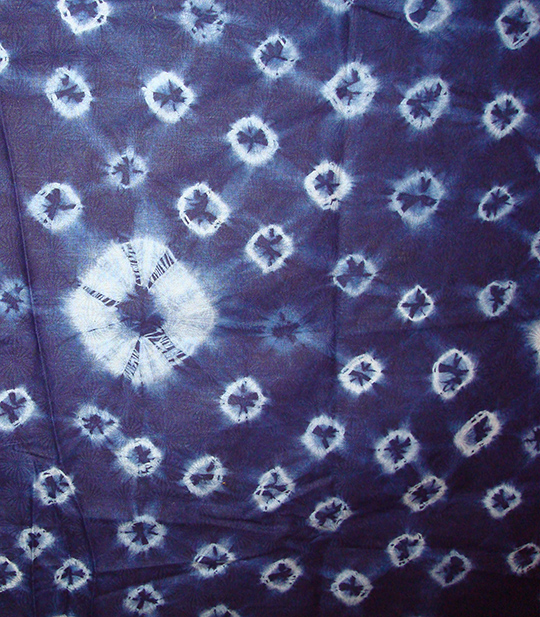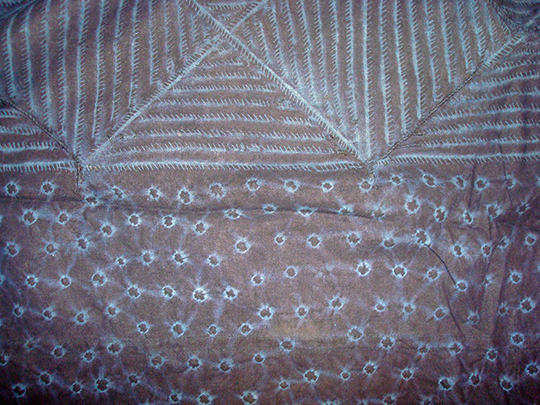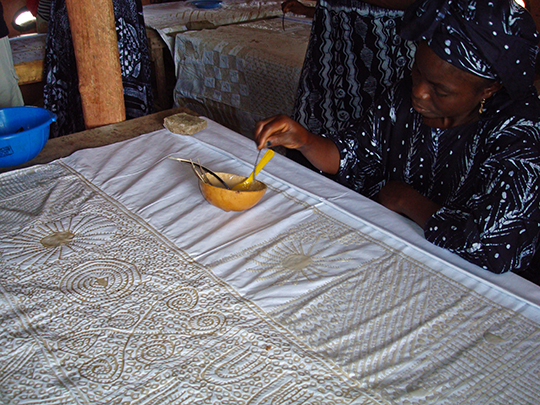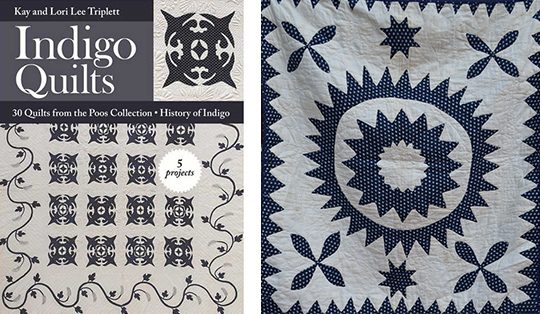Adire: African Indigo Resist
Posted by Lori Lee Triplett on Oct 14th 2015
Please welcome Lori Lee Triplett to the blog today for our continuation of National Sewing Month, as she talks about the African indigo resist techniques used on some of the quilts shown in the book she wrote with her sister, Indigo Quilts.
We’re so pleased for this opportunity to start the conversation with you about our love of African textiles, as well as their influence on American fabric and quilts. Kay Triplett, my sister, lived and worked in Africa for about 10 years, where she fell in love with the African culture and artistry. It wasn’t long after she shared her passion with me that I began to explore the techniques for myself. Of course, we recognized these African influences in the quilting fabric found in the beautiful antique quilts of the Poos Collection. Be sure to check out our third book, Indigo Quilts, to learn more about the history of indigo and see the more than 30 stunning, antique, mostly American indigo quilts and a smattering of West African textiles.
Adire or African indigo resist has multiple techniques which can be grouped into three types: Oniko or tied, Alabere (stitch with raffia), and Elecko or painted. Oniko is one of the oldest techniques known and can be as simple as the fabric twisted or crumpled and tied on itself. The fabric can also be folded into stripes or wrapped around a stone or seed and then tied with raffia. Obtaining the raffia is a little tricky, more on that later.

Alabere uses some of the same techniques used in Oniko in combination with stitching the fabric with raffia. So the first step is to strip the spine off the raffia palm to prepare your “thread.” Then begins the fun of stitching intricate designs, while you hope your spine thread doesn’t break. If it does break, back to the palm to obtain your thread. It is definitely an acquired skill!

Elecko involves taking chicken feathers and painting designs on the feather with cassava root paste. So first you must crush the cassava root to create a paste (after digging up the cassava root). Then you need to chase the chicken around the front yard to catch her and pluck the feather. Hmmm…which came first, the chicken feather or cassava root? Neither is easy, which is only one of the reasons we admire the Africans' amazing talent and skill.

Please stop by to meet us in person at the International Quilt Festival in Houston where you can see the indigo quilts in a special exhibition. Then, be sure you check back in November to see our video demonstrating some of these techniques. Hint: it does not involve chasing chickens!
Want to win a copy of Indigo Quilts? Enter our giveaway here: a Rafflecopter giveaway! Open to US and international residents; US winner will receive a physical copy, while an international winner will receive an ebook. Winner will be announced on the blog one week from today.
Congratulations to Kay B., winner of this giveaway! Kay, we hope you enjoy learning more about the history of indigo, and thank you so much to everyone else who entered!








